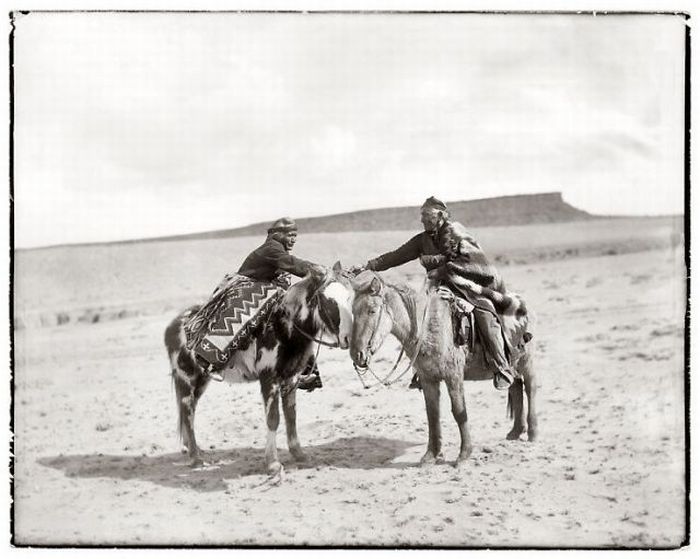|
|
Native Americans
|
The differences in culture between the established native Americans and immigrant Europeans, as well as shifting alliances among different nations of each culture through the centuries, caused extensive political tension, ethnic violence and social disruption. The American Indians suffered high fatalities from the contact with infectious Eurasian diseases, to which they had no acquired immunity. Epidemics after European contact caused the greatest loss of life for indigenous populations. Estimates of the pre-Columbian population of what today constitutes the U.S. vary significantly, ranging from 1 million to 18 million.
After the colonies revolted against Great Britain and established the United States of America, President George Washington and Henry Knox conceived of the idea of "civilizing" Native Americans in preparation for assimilation as United States citizens. Assimilation (whether voluntary as with the Choctaw, or forced) became a consistent policy through American administrations. During the 19th century, the ideology of Manifest destiny became integral to the American nationalist movement. Expansion of European-American populations to the west after the American Revolution resulted in increasing pressure on Native American lands, warfare between the groups, and rising tensions. In 1830, the U.S. Congress passed the Indian Removal Act, authorizing the government to relocate most Native Americans of the Deep South from their homelands east of the Mississippi River to the West, to accommodate European-American expansion from the coastal United States. Government officials thought that by decreasing the conflict between the groups, they could help the Indians survive. American Indians have continued to live throughout the South. They have organized and been recognized as tribes since the late 20th century by several states and, in some cases, by the federal government.
The first European Americans to encounter the western tribes were generally fur traders and trappers. There were also Jesuit missionaries active in the Northern Tier. As United States expansion reached into the American West, settler and miner migrants came into increasing conflict with the Great Plains tribes. These were complex nomadic cultures based on using horses and traveling seasonally to hunt bison. They carried out strong resistance to United States incursions in the decades after the American Civil War, in a series of "Indian Wars", which were frequent up until the 1890s. The coming of the transcontinental railroad increased pressures on the western tribes. Over time, the U.S. forced a series of treaties and land cessions by the tribes, and established reservations for them in many western states. U.S. agents encouraged Native Americans to adopt European-style farming and similar pursuits, but the reservation lands were often too poor and dry to support such uses.
Contemporary Native Americans have a unique relationship with the United States because they may be members of nations, tribes, or bands of Native Americans who have sovereignty or independence from the government of the United States. Since the late 1960s, American Indian activism has led to the building of cultural infrastructure and wider recognition of their unique identities and contributions throughout United States society: they have founded independent newspapers, community schools, tribal colleges, and tribal museums and language programs; academic institutions across the country have created Native American studies programs; national and state museums have been founded to recognize American Indians' historic and current contributions. American Indian authors have been increasingly published (with the vast majority writing in the colonial language, English); other American Indians work as historians and in a wide variety of occupations. Traditional and contemporary artists and craftsmen express their identities. Cultural activism has led to an expansion of efforts to teach and preserve indigenous languages for younger generations. Their societies and cultures flourish within a larger population of descendants of immigrants (both voluntary and involuntary): African, Asian, Middle Eastern, and European peoples. At one time, the US required Native Americans to give up tribal membership in order to be accepted as citizens. This policy changed and in 1924, Native Americans who were not already U.S. citizens were granted citizenship by Congress.
|
|









